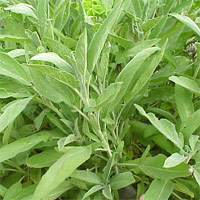Sage

There are numerous types of sage , although just a few are considered culinary herbs. A classic herb for stuffing, sage is also used in salads as well as meat and poultry dishes. Common sage is a handsome perennial shrub with downy, gray-green foliage.
About This Plant
Common sage is attractive; however, there are several cultivars that are even more ornamental because of their leaf color. Purple sage, golden sage, and tricolor sage can add great variety and accent to the garden, although all tend to be less hardy than regular sage.
Site Selection
Sage thrives in a sunny garden location and very well-drained soil. Young plants need a steady moisture supply until they are established.
Planting Instructions
You can start plants easily indoors from seed or in the garden in early spring. However, plants grown from seed may not have the same leaf shape and color as the parent plant. A better way to grow true-to-form, high-quality sage is to take cuttings from an established plant. Set plants or thin seedlings to stand 24 to 30 inches apart.
Care
Each spring, prune the heavier, woody stems from the plants. The quality will drop off after 4 or 5 years, so dig up older plants and replace them with new ones started from seed or by cuttings.
Harvesting
Harvest lightly during the first year to allow this perennial plant to become established. In the following couple of years, you may be able to harvest an entire plant two or three times. When harvesting, leave a few stalks in place to allow the plant to rejuvenate.






 There are numerous types of sage , although just a few are considered culinary herbs. A classic herb for stuffing, sage is also used in salads as well as meat and poultry dishes. Common sage is a handsome perennial shrub with downy, gray-green foliage.
There are numerous types of sage , although just a few are considered culinary herbs. A classic herb for stuffing, sage is also used in salads as well as meat and poultry dishes. Common sage is a handsome perennial shrub with downy, gray-green foliage.